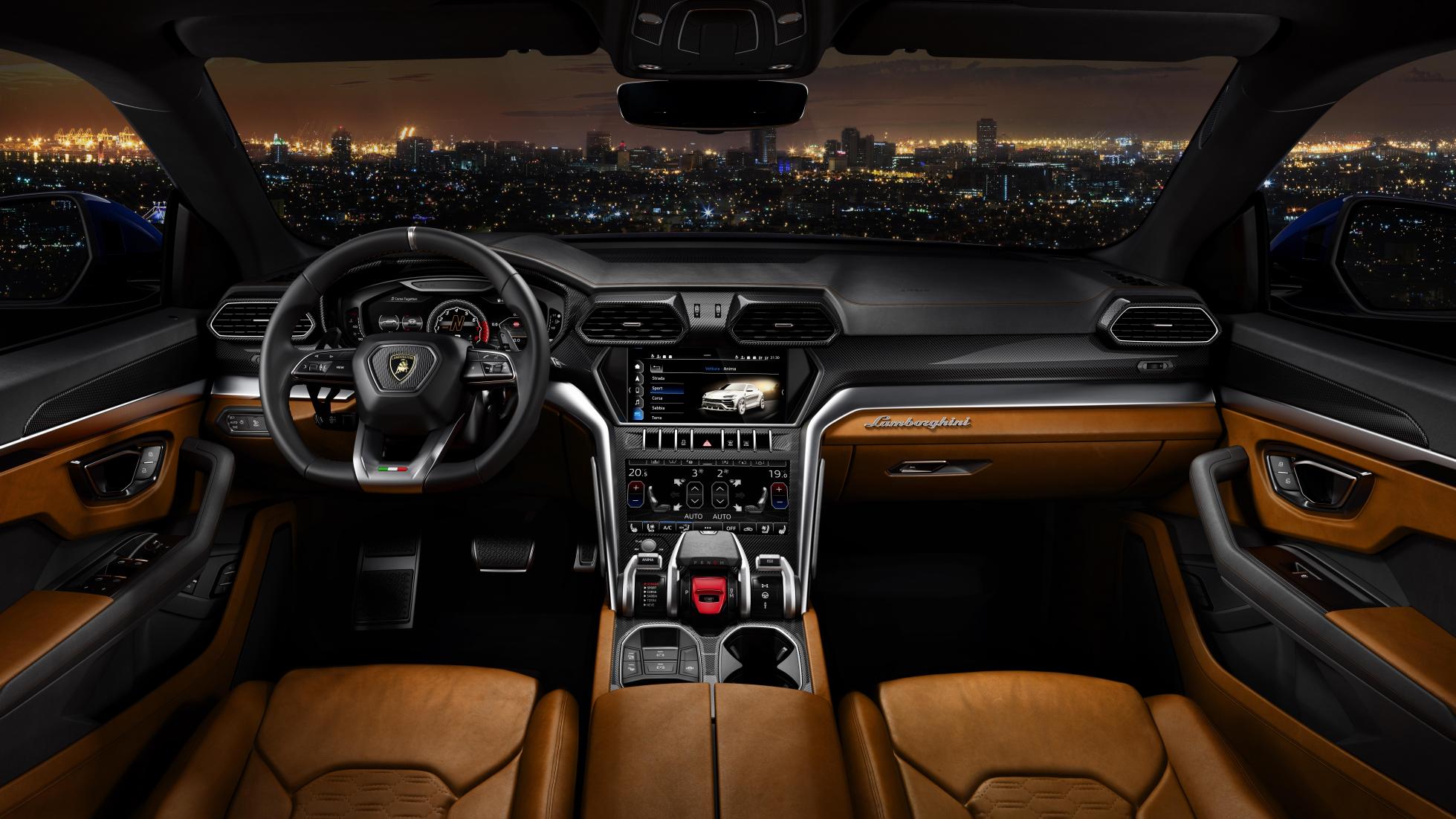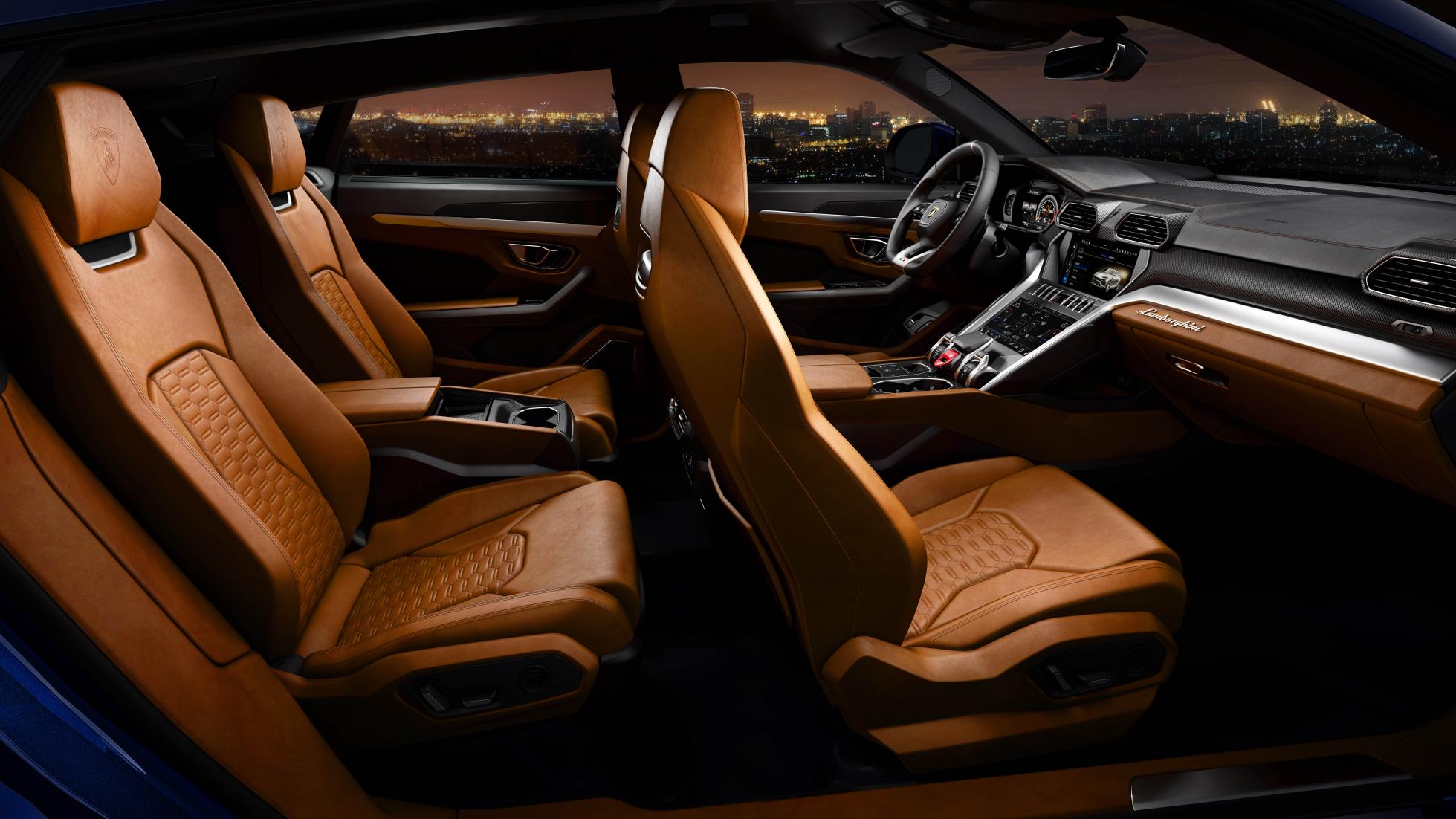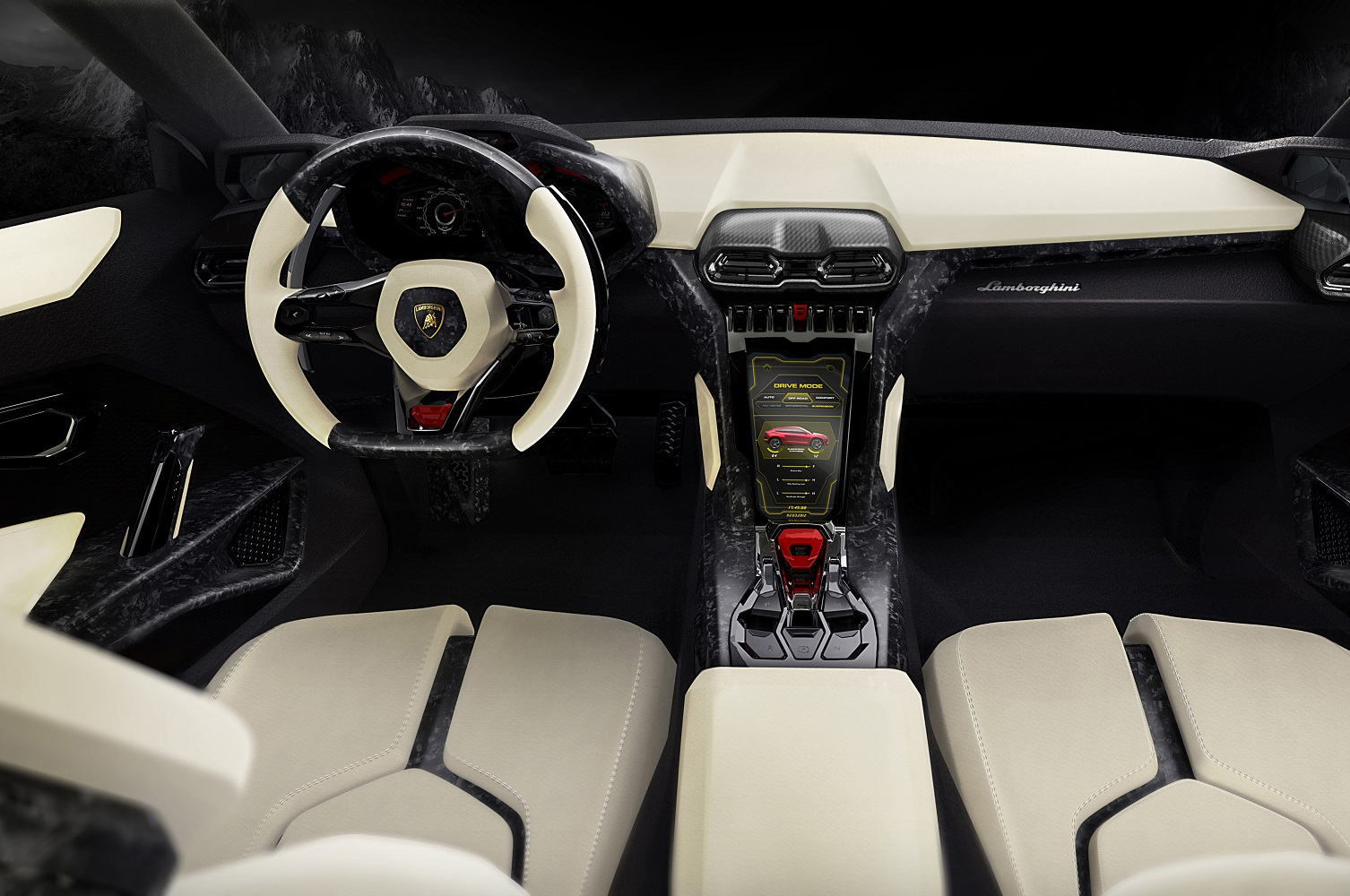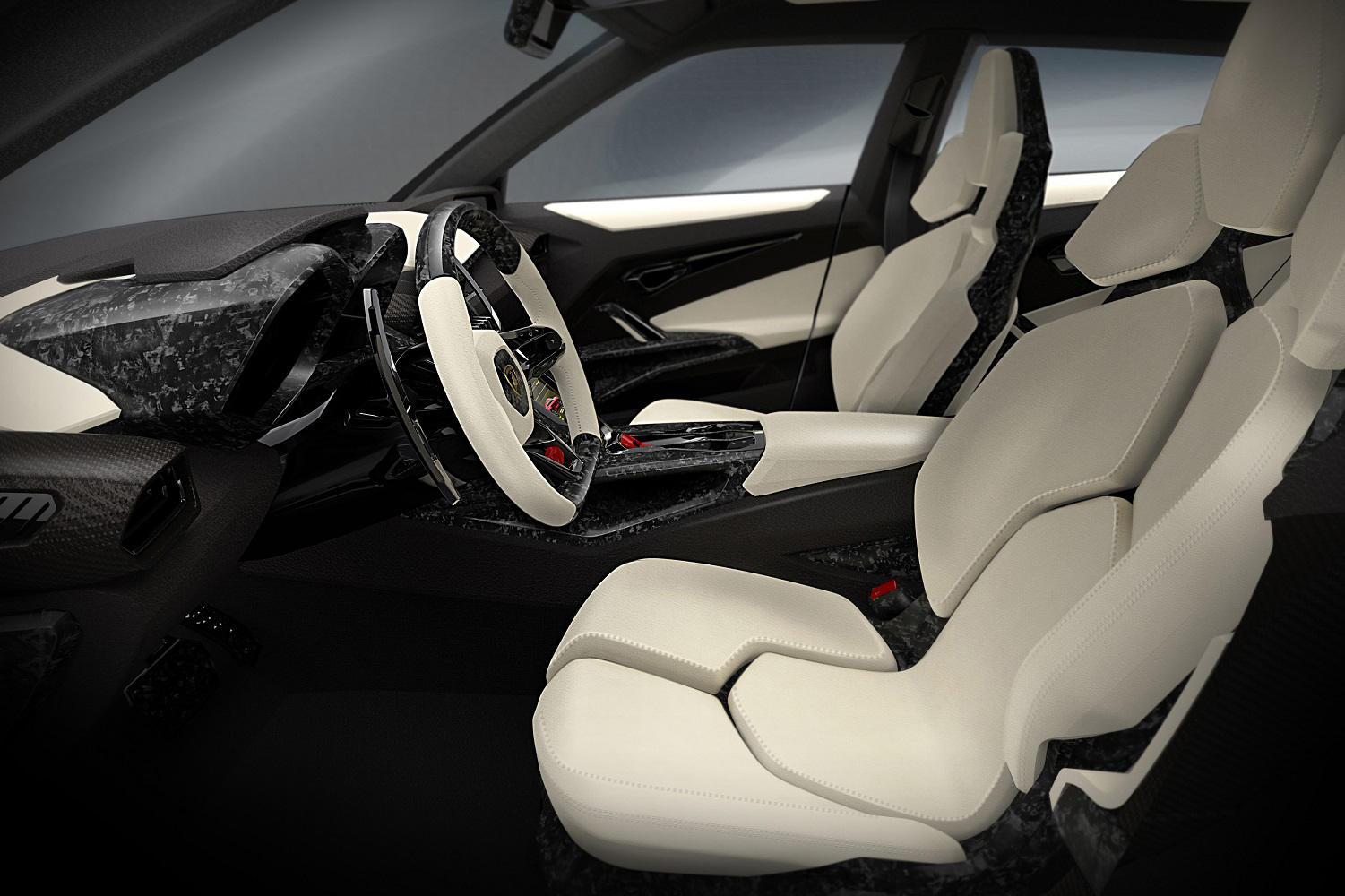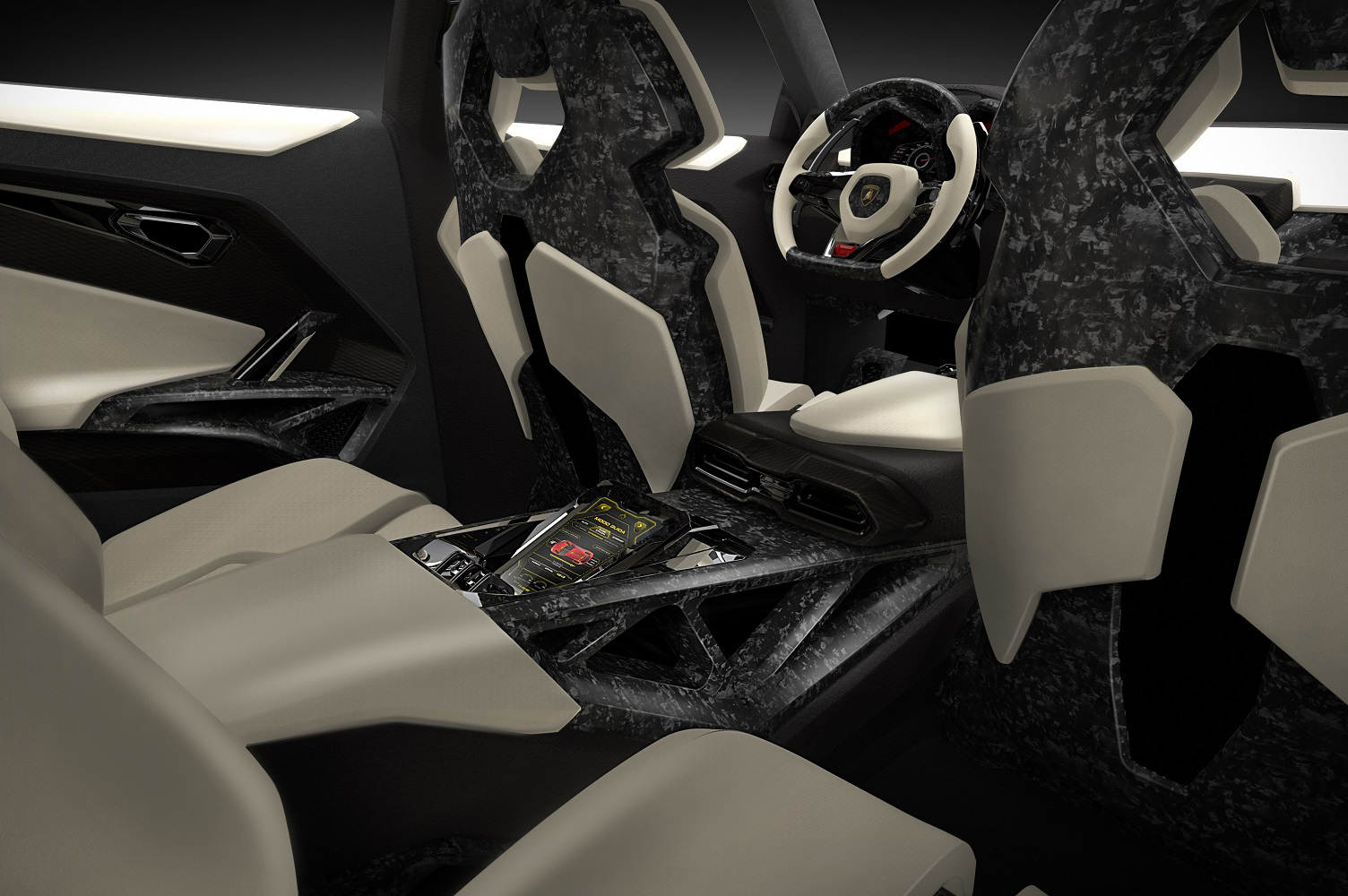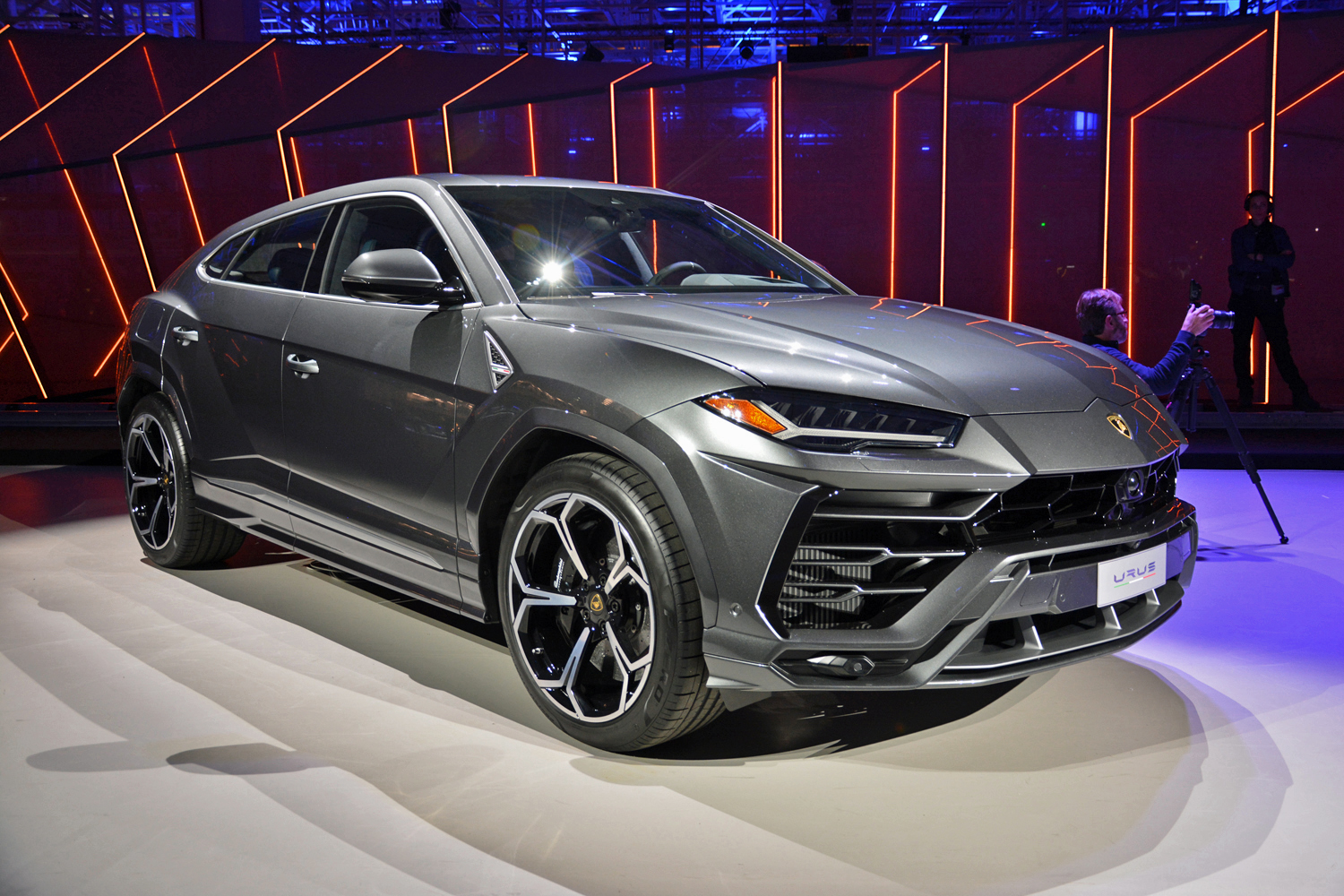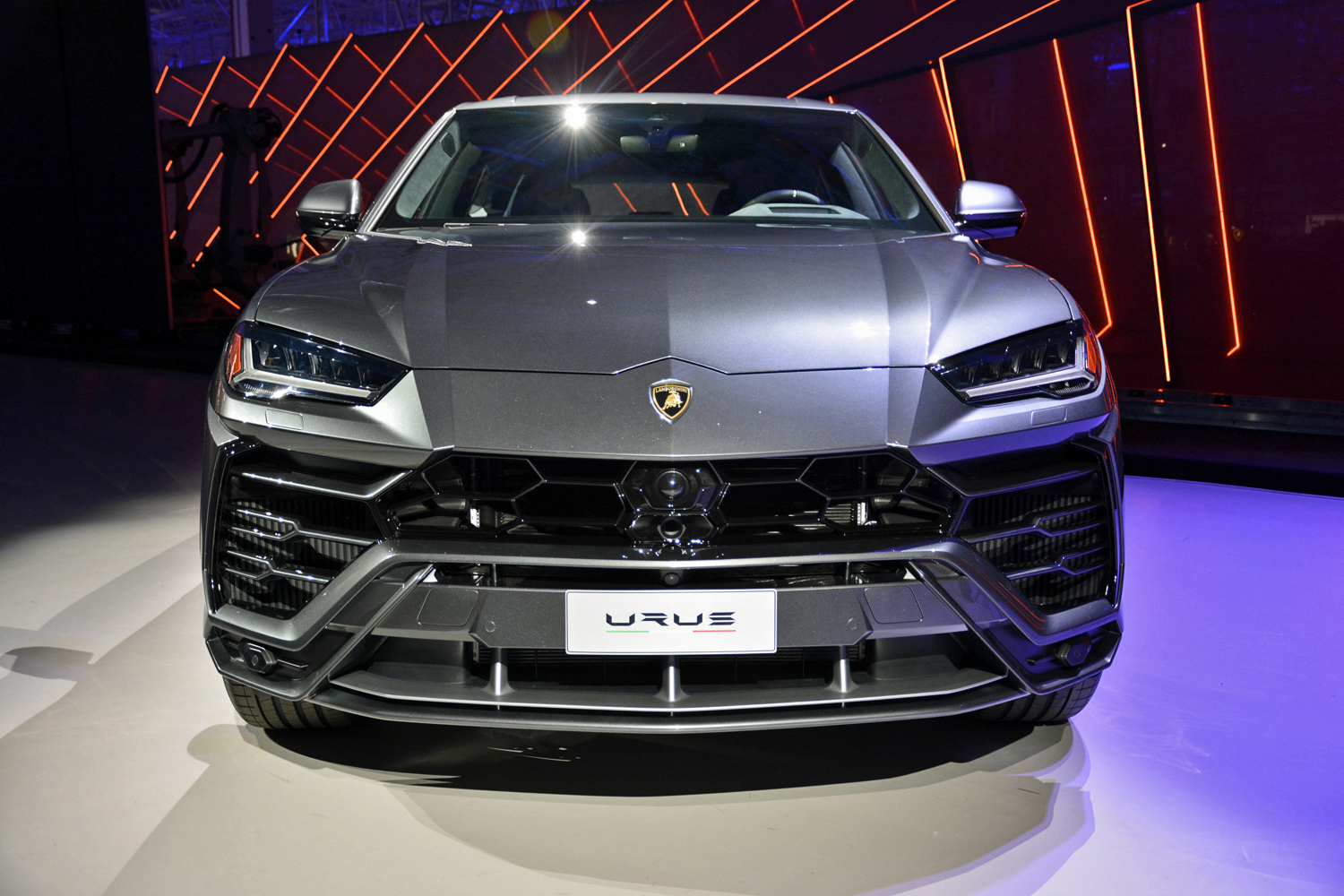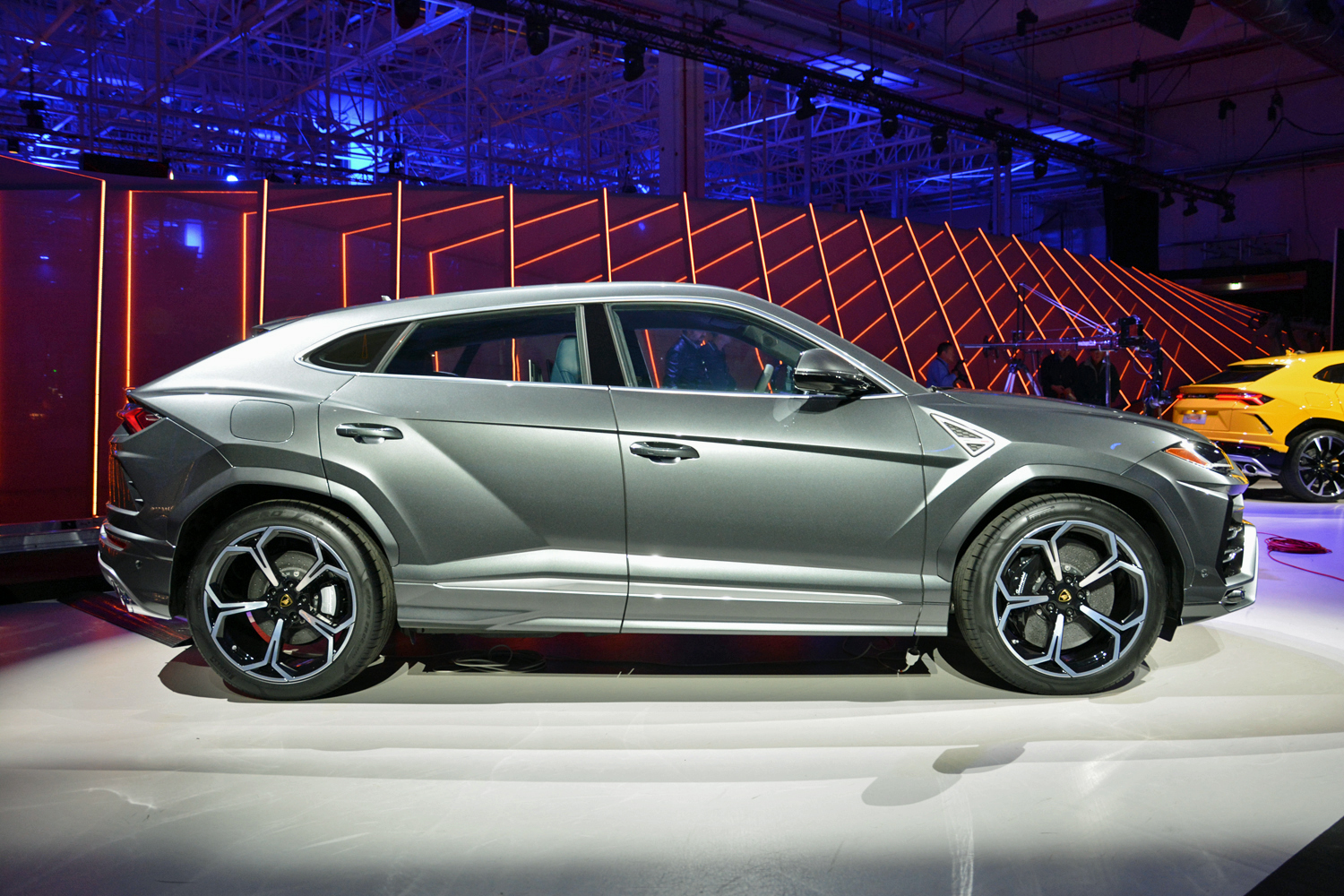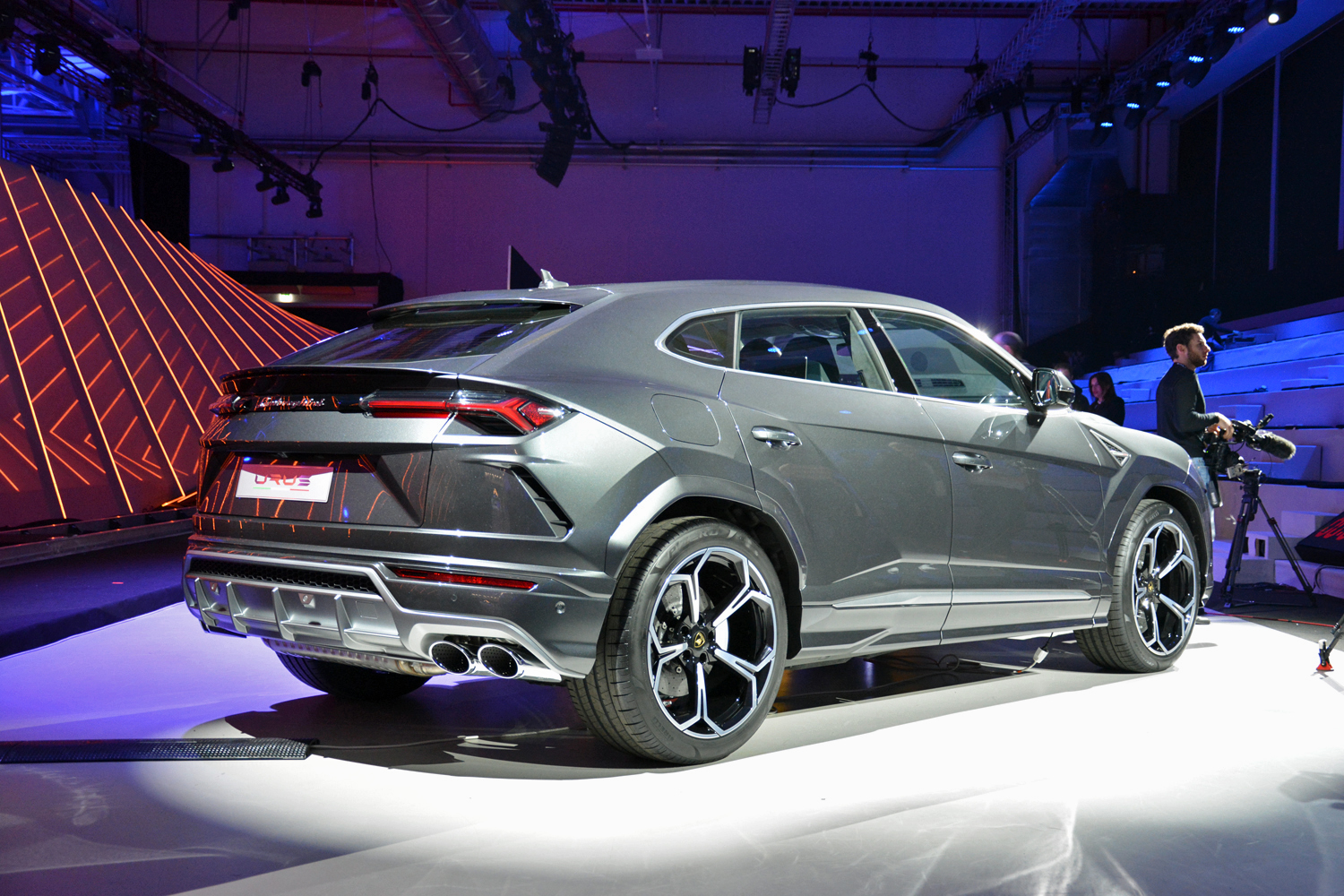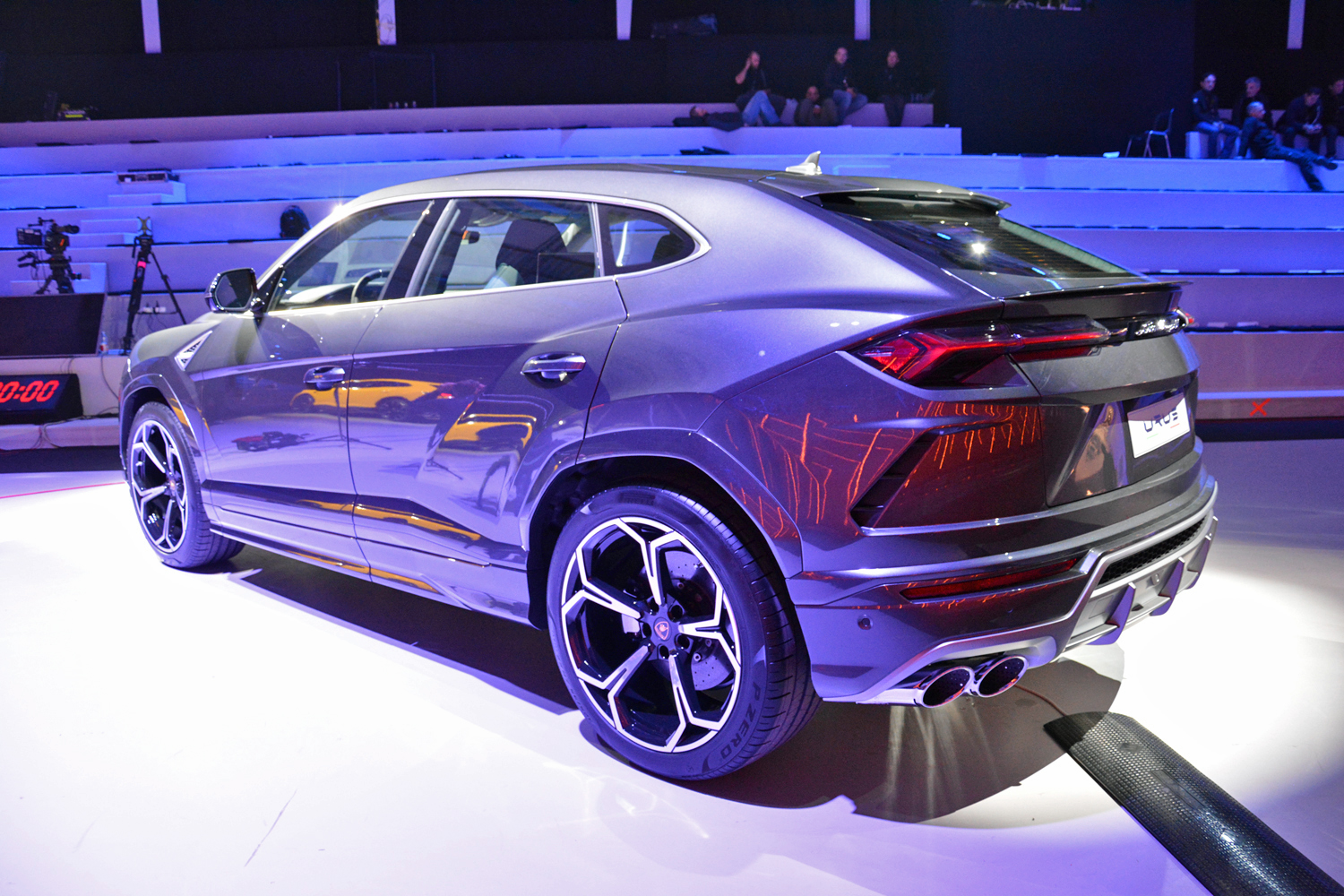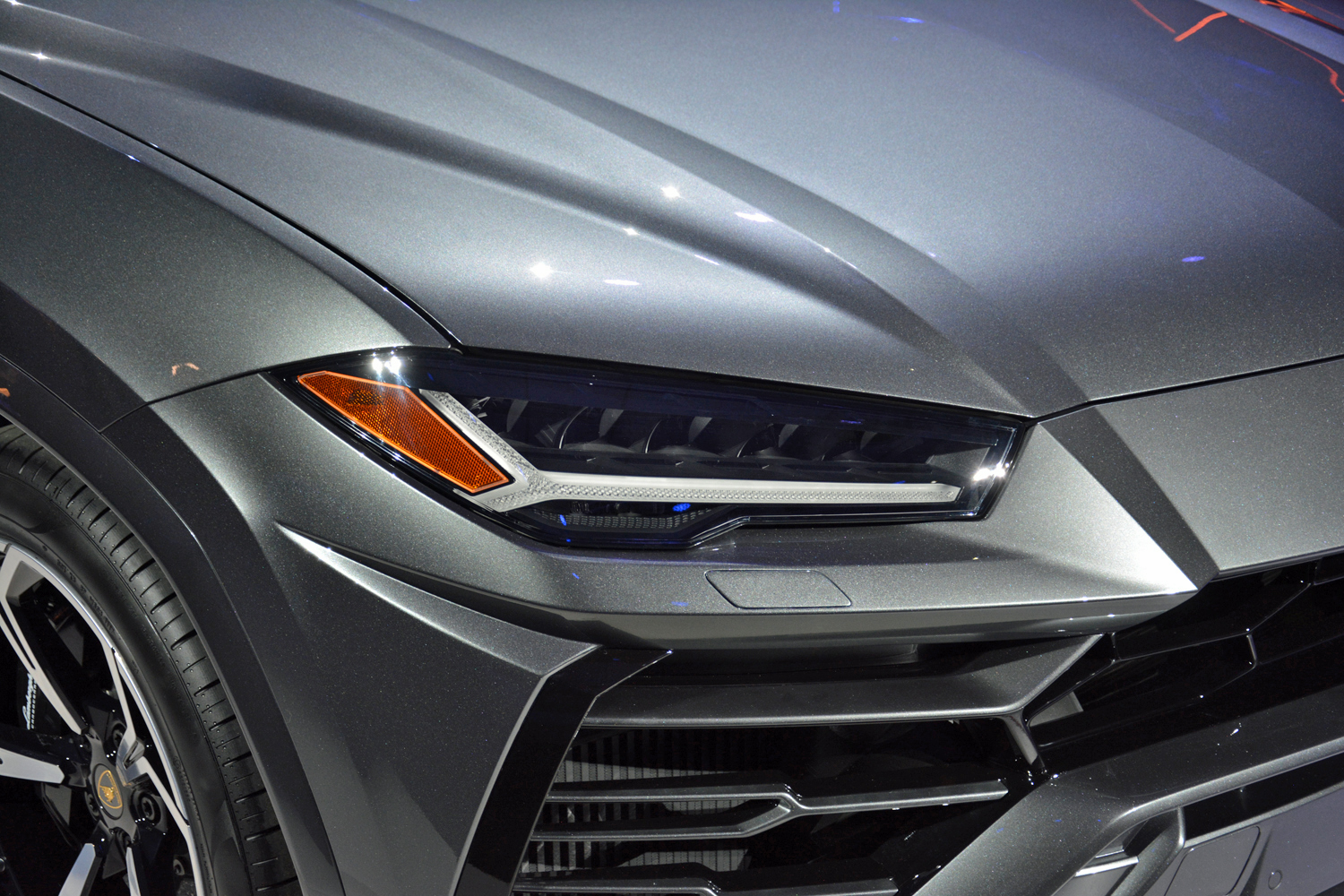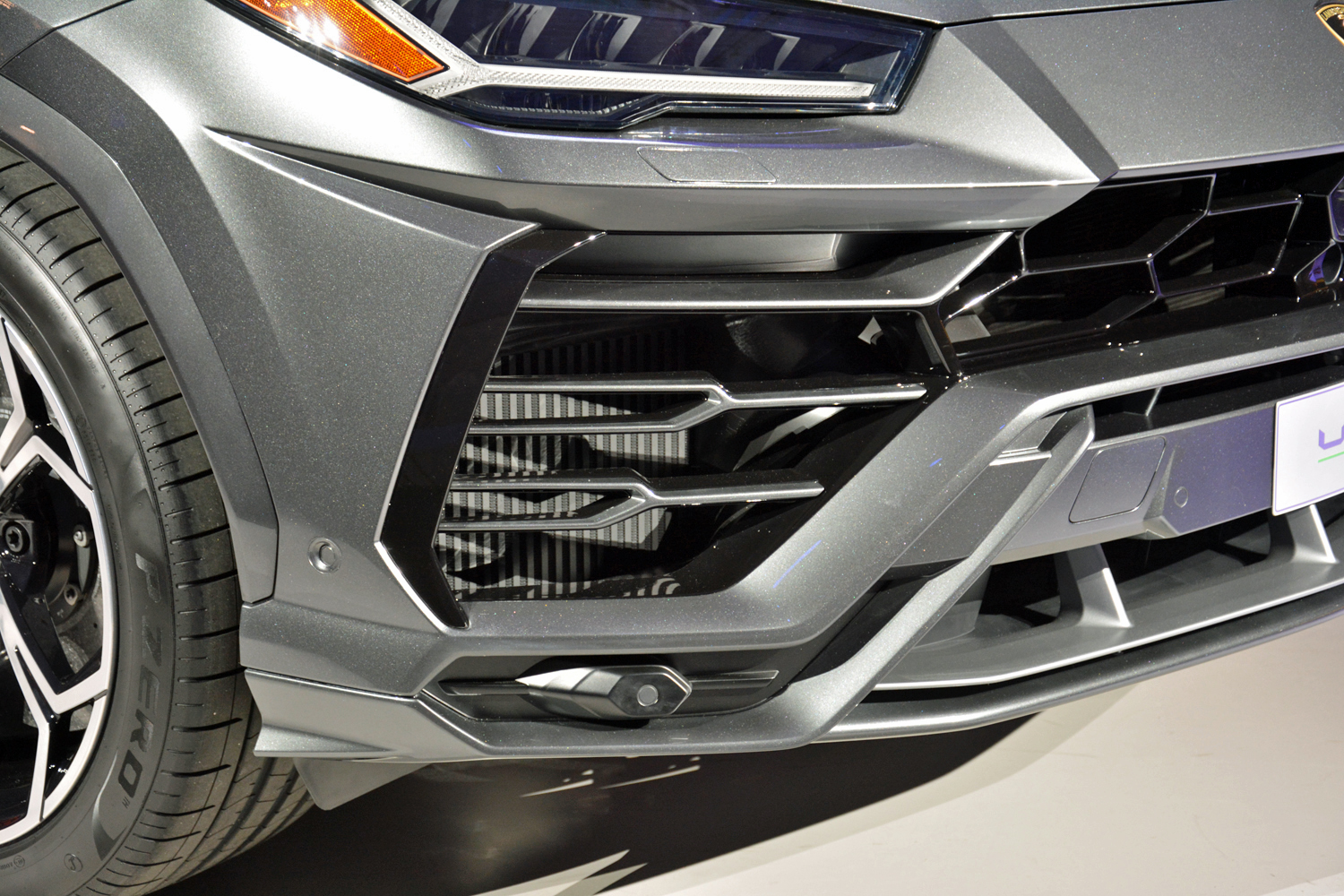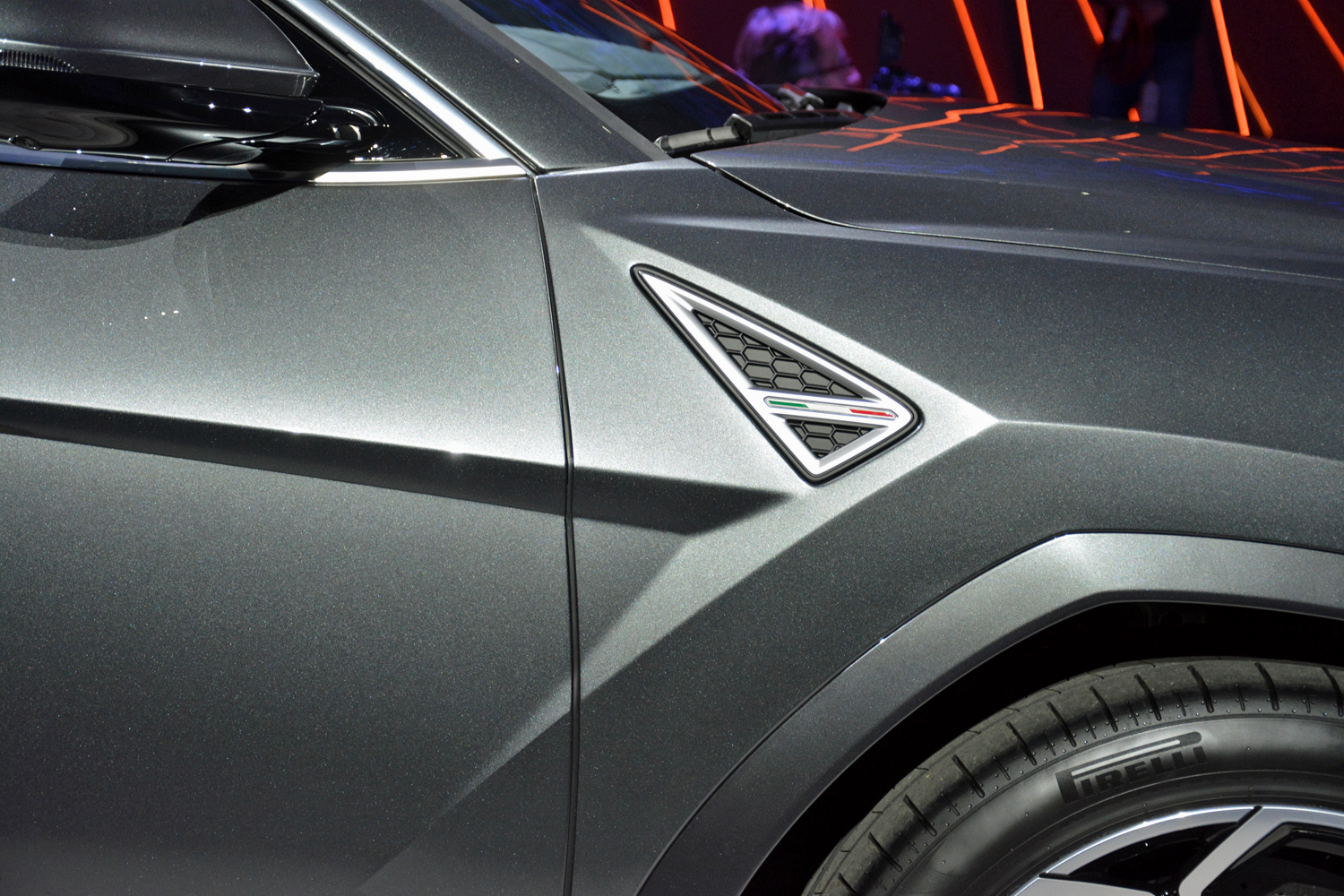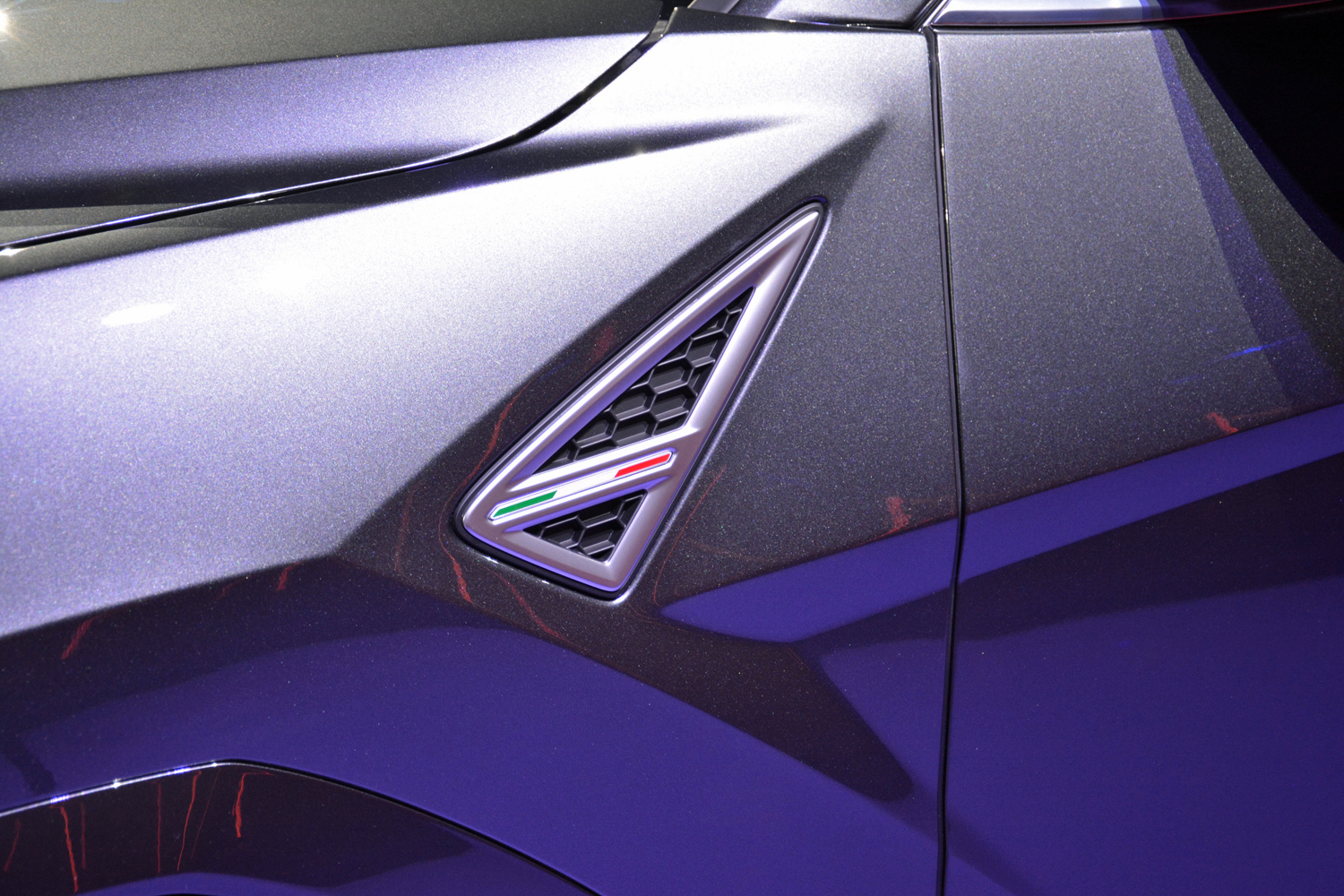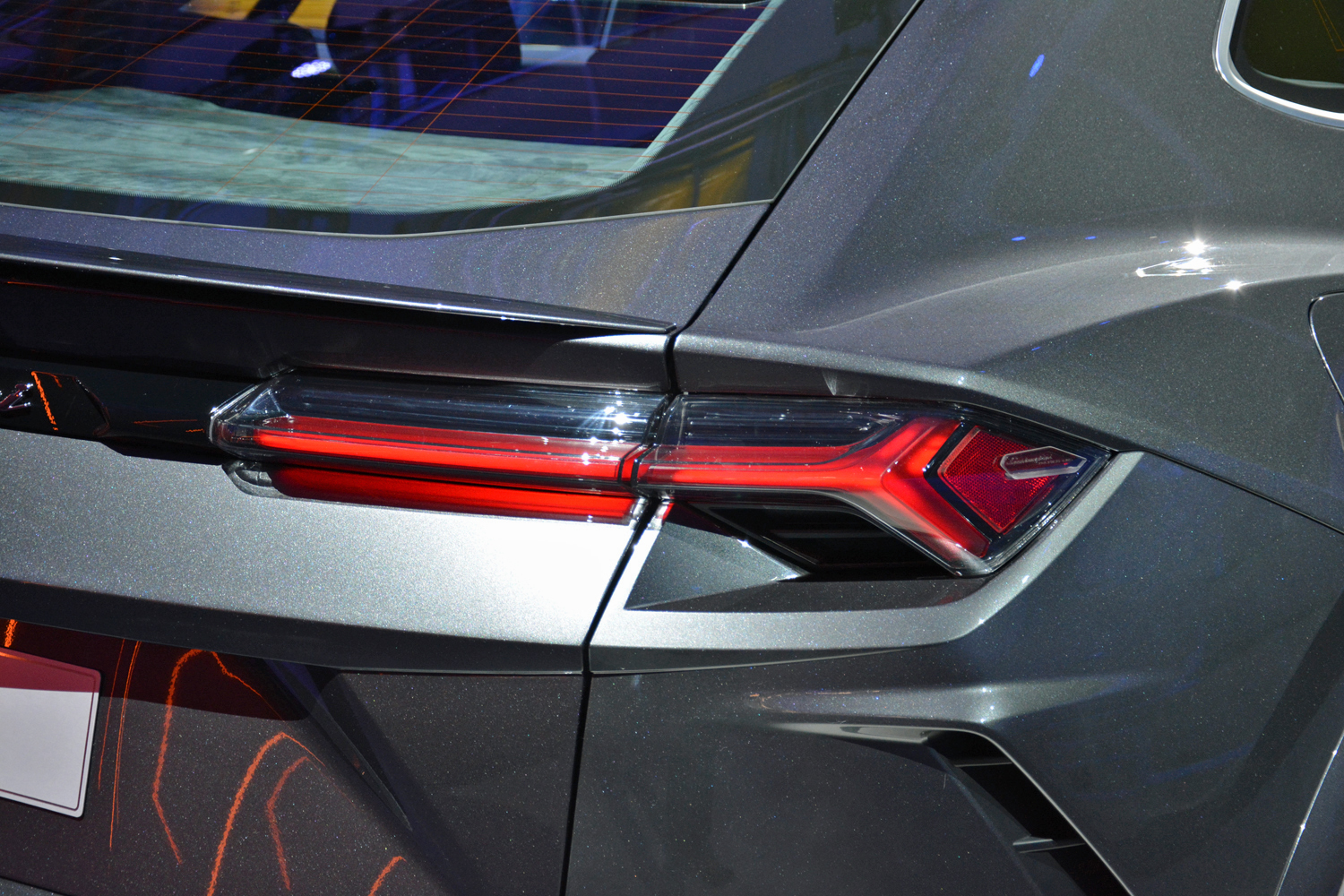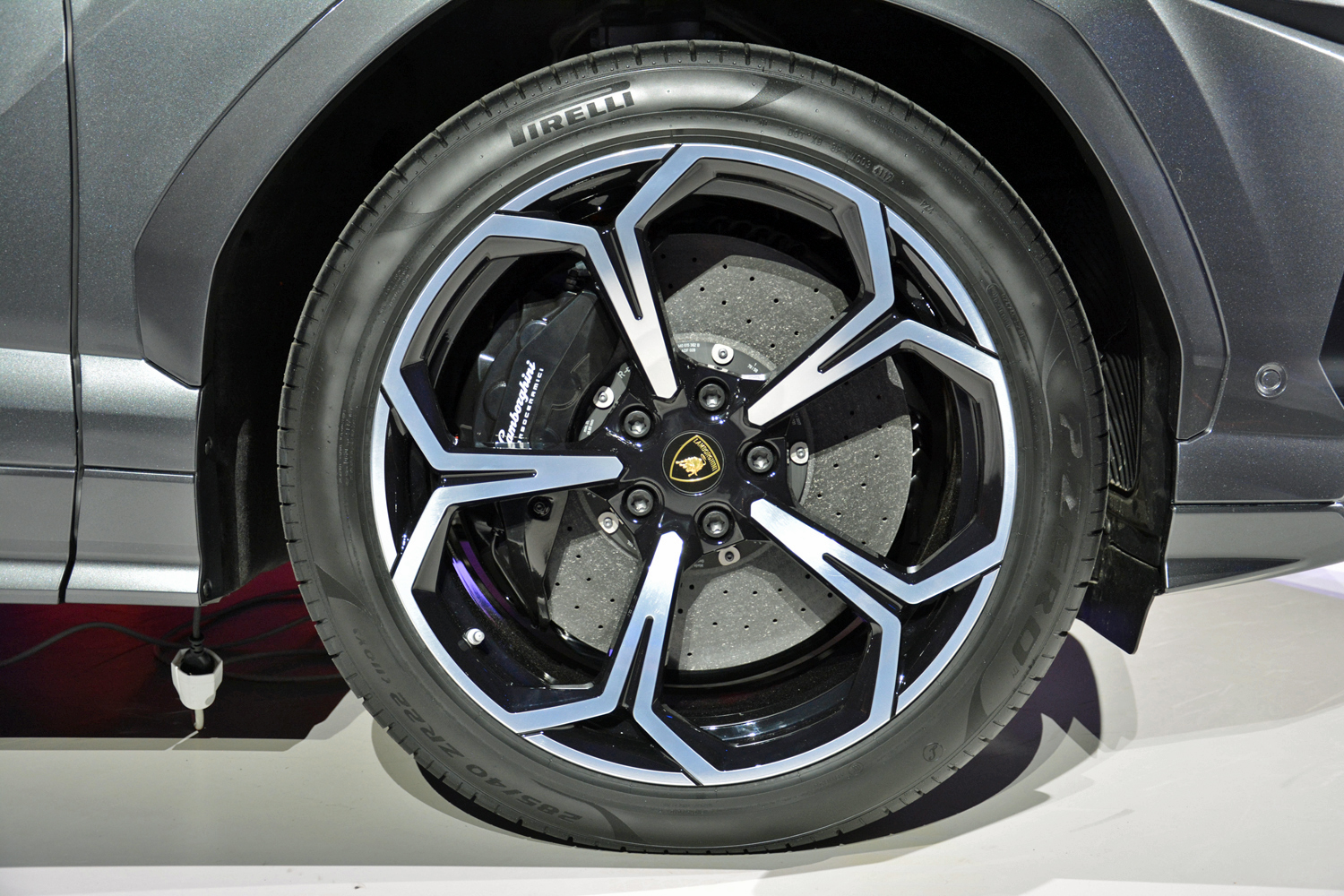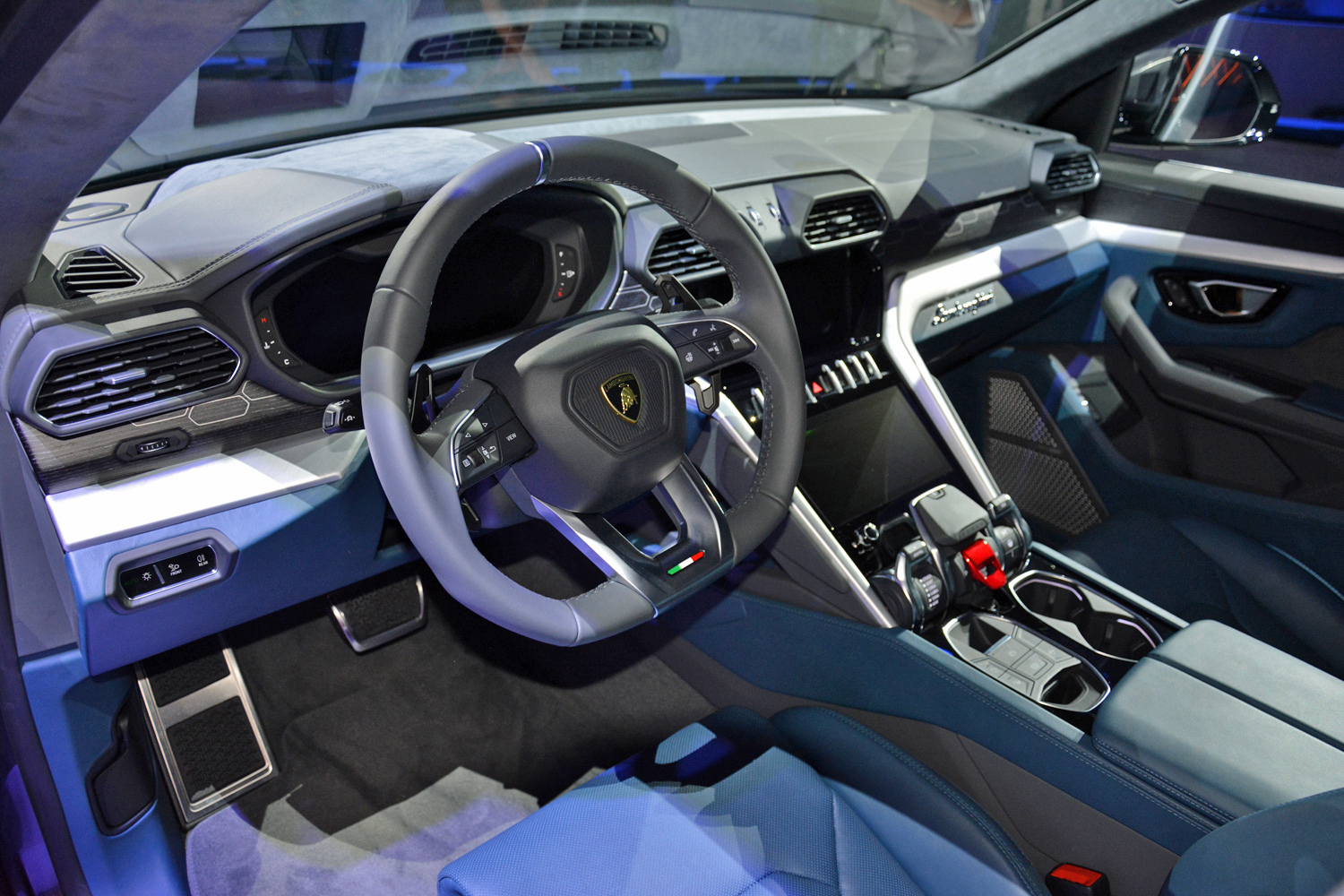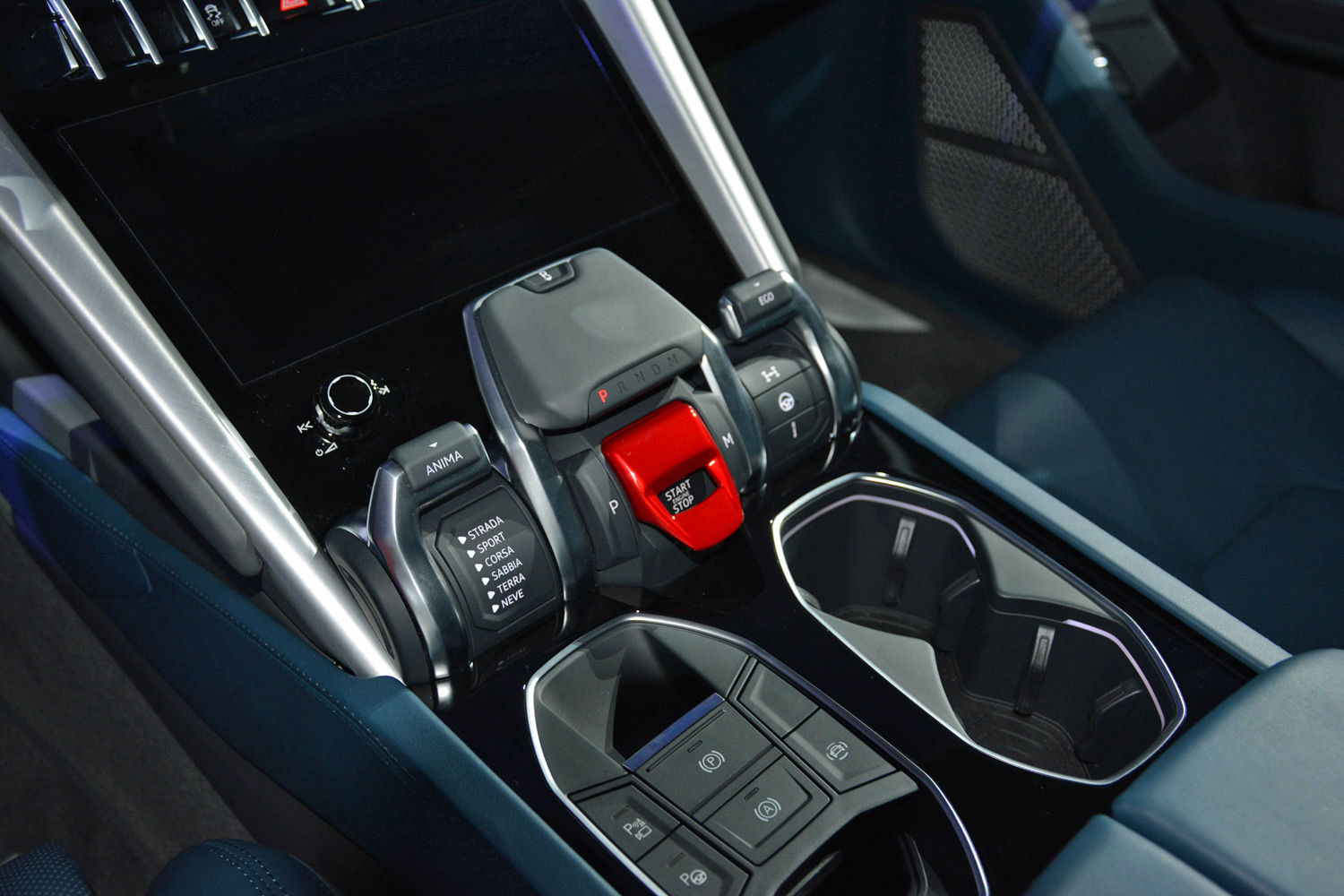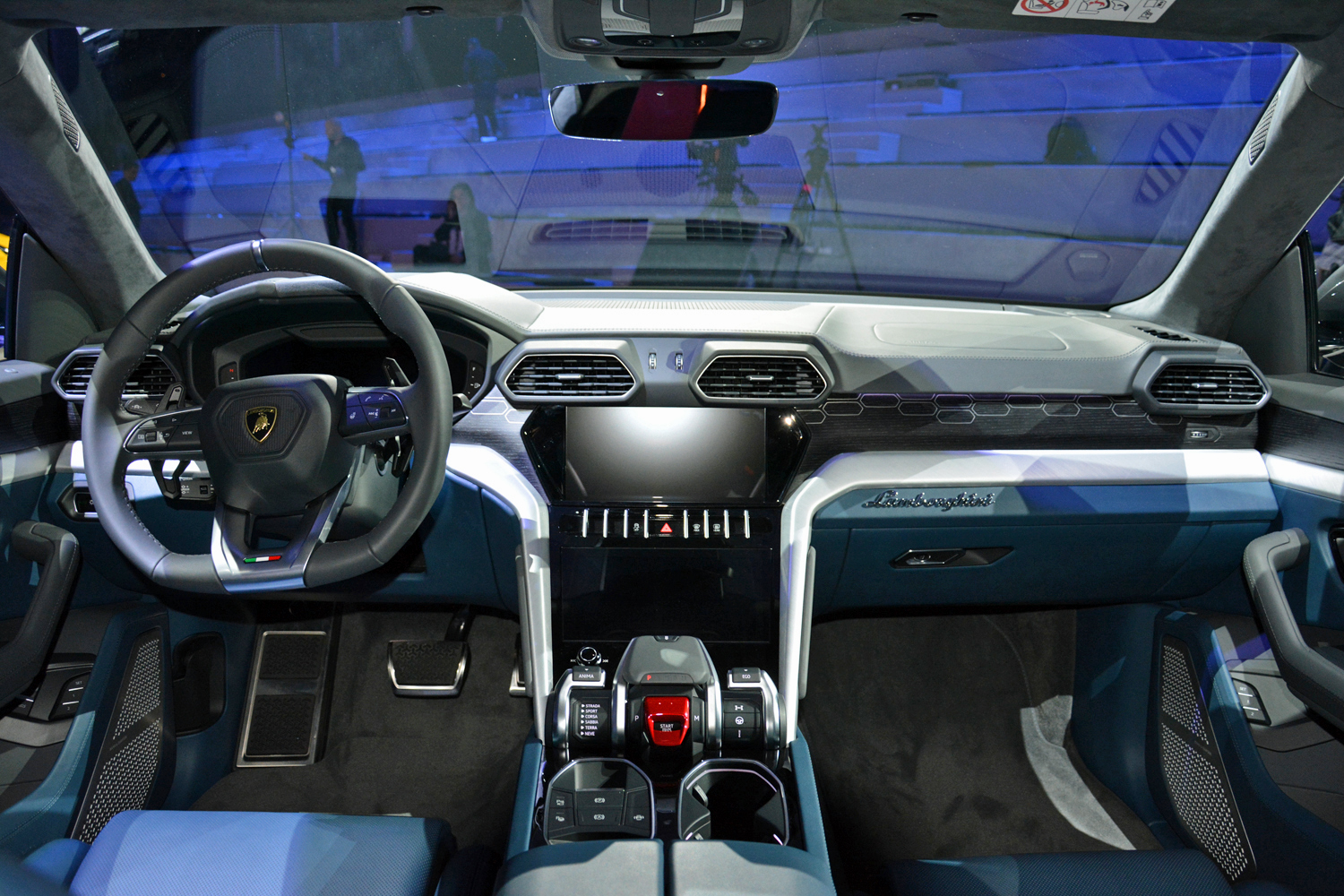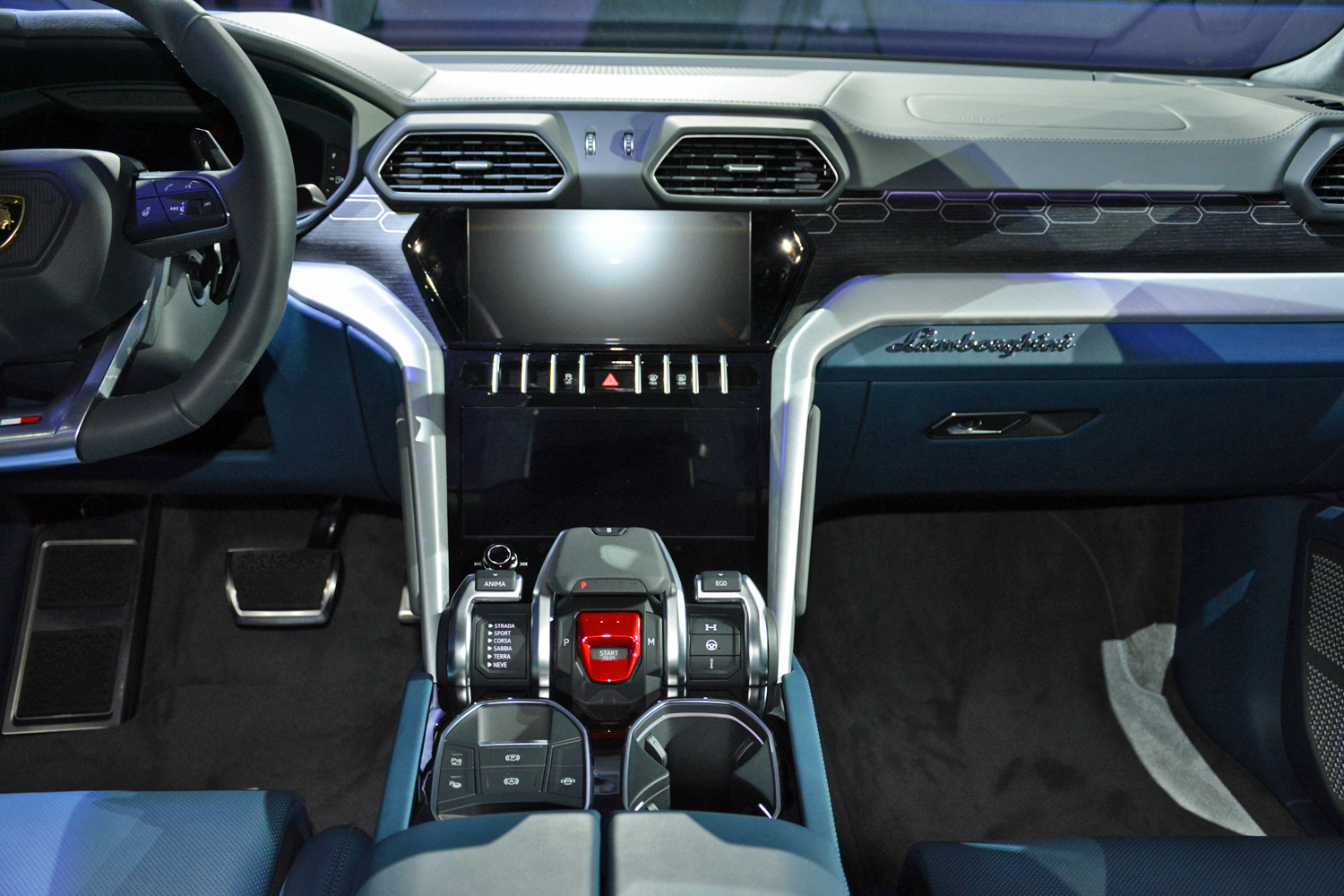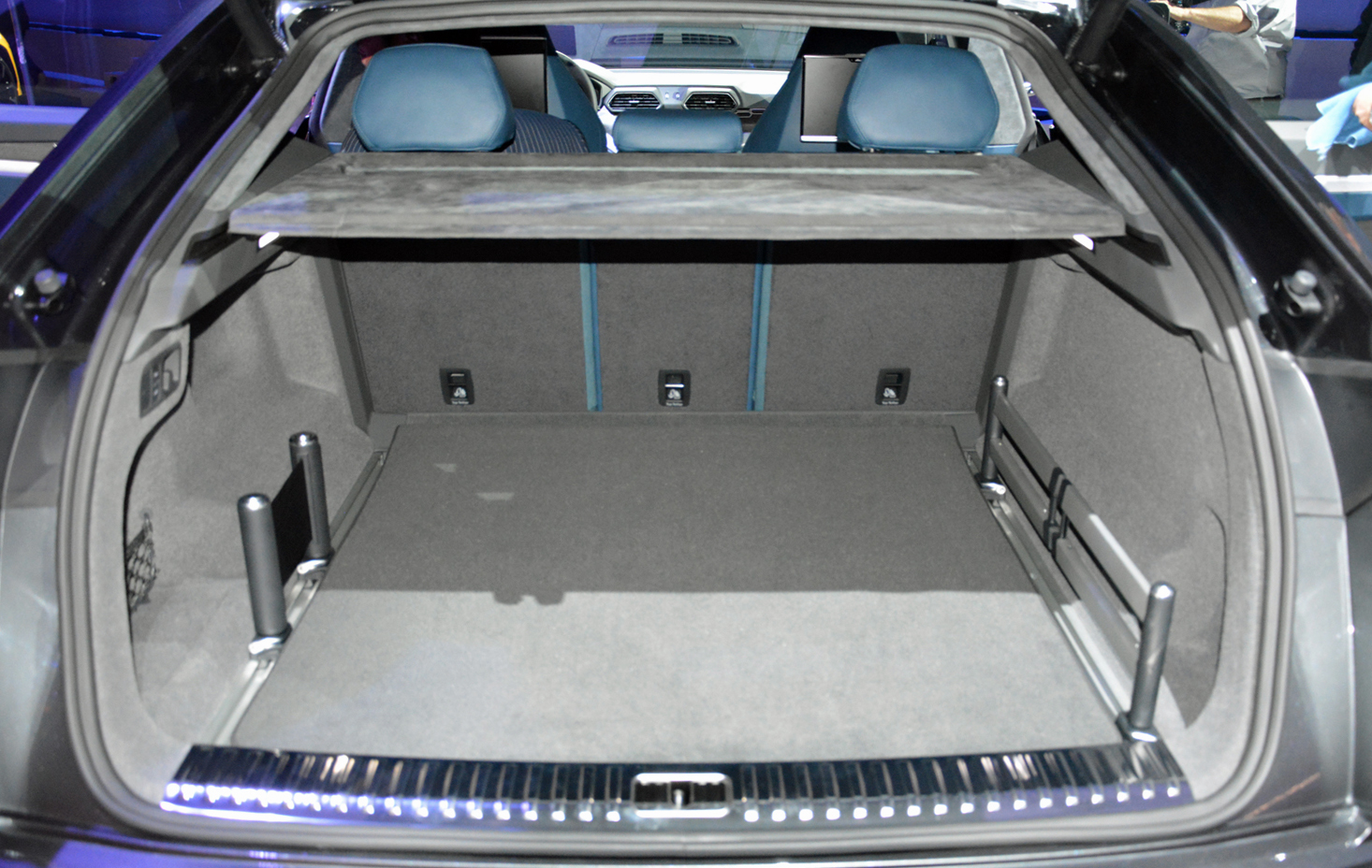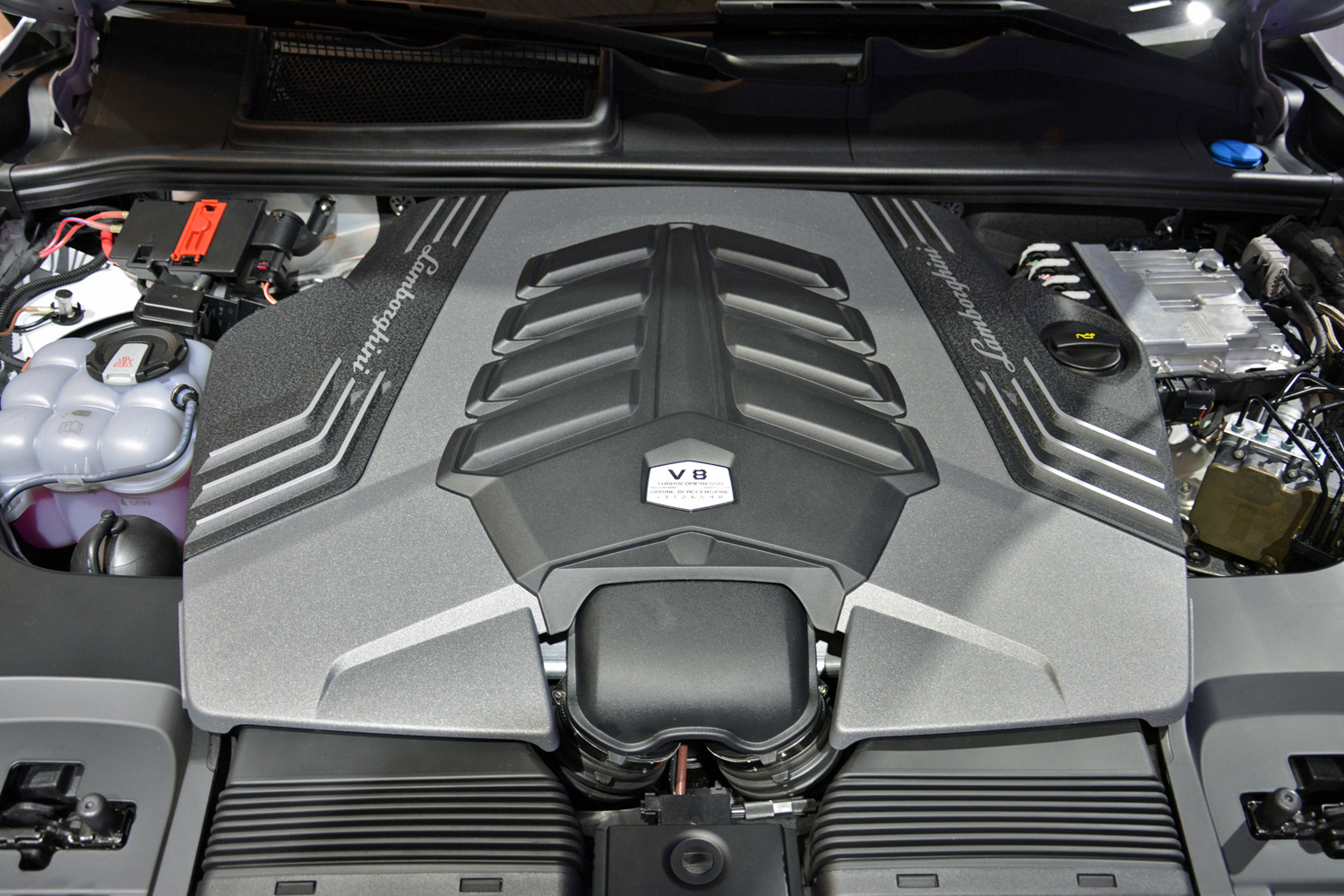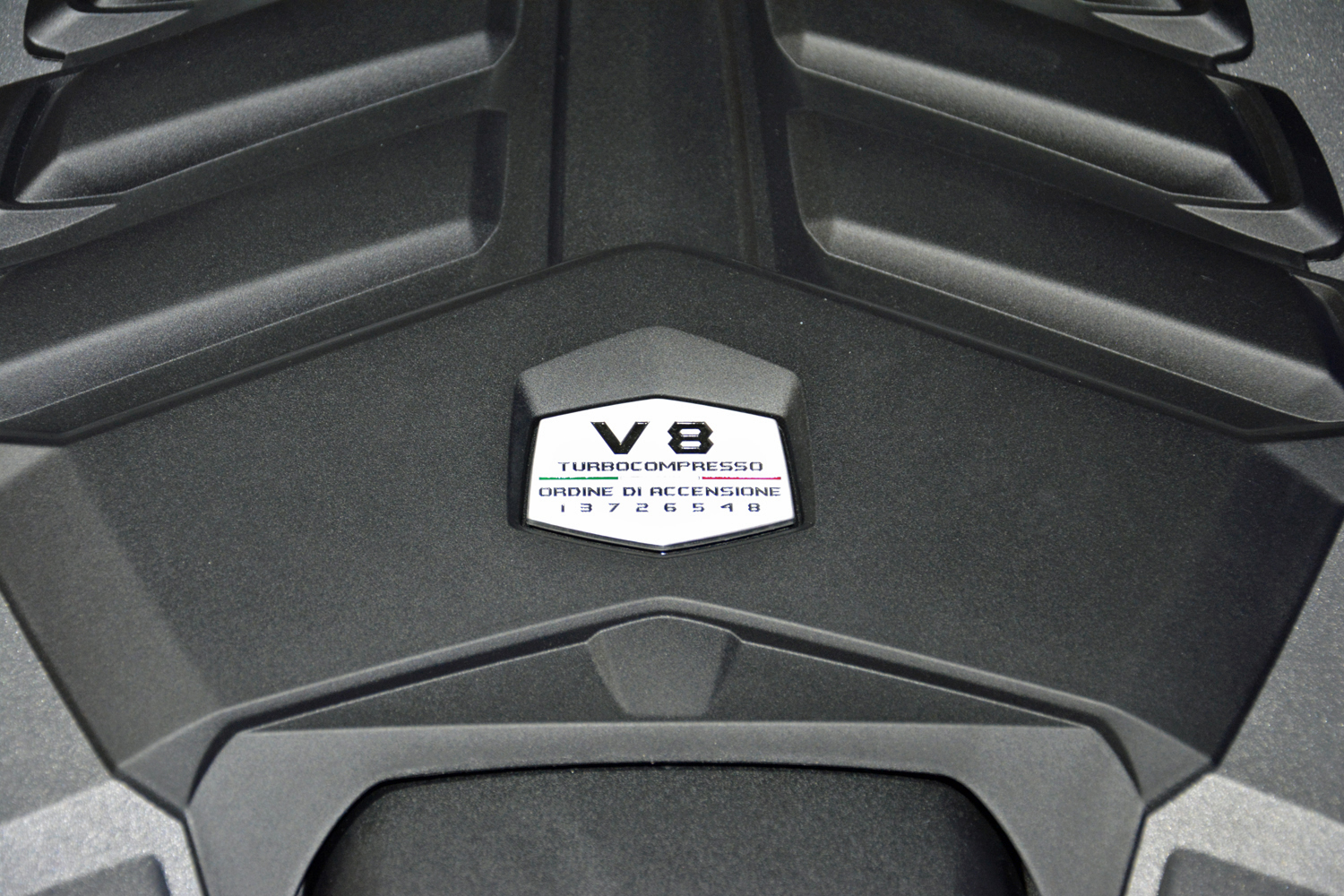The Lamborghini Urus is unlike any car in the automaker’s illustrious 54-year history — and not just because it’s an SUV. Believe it or not, the idea of a Lamborghini SUV isn’t new. You might remember the 1980s-era LM002, which made the Mercedes-Benz G-Class look pedestrian by comparison. But while the LM002 was a sledgehammer of a truck, the Urus is as precise as a surgeon’s scalpel, and it’s poised to become the brand’s best-selling model by a long shot. Here’s why.
Design
The Urus brings breathtaking modern Italian design to the SUV space, and even though the segment of “super-SUVs” is becoming more crowded by the day, the Urus is far and away the most striking to the eyes. That’s because even though it can ferry a family around town in comfort, it’s still unapologetically a Lamborghini. The vehicle’s front fascia wears a handful of styling cues from the ultra-sleek Aventador S, and sizable air vents punched into the front bumper hint at the vehicle’s performance credentials.
The rakish roofline and pronounced haunches carry over with only minor changes, but the production model’s rear-end appears to be a little bit longer than the concept’s, a concession likely made in the name of practicality. This is the daily-driveable Lamborghini, after all. That doesn’t mean the Raging Bull has gone soft; the Urus will be the Lamborghini of the SUV segment, and it will certainly look — and sound — the part.
Tech
To play the all-important tech card, Lamborghini designed an interior with two large touchscreens on the center console. There is one that displays the infotainment system, and a second one for the climate control settings. They replace the bulk of the buttons commonly found between the front passengers. There is also a third screen behind the steering wheel that occupies the space normally reserved for the instrument cluster, a setup already found on the brand’s supersports cars. Fully configurable, the digital instrument cluster will adopt a different look depending on which driving mode is selected.
Drivers will also be able to customize their experience behind the wheel. Inside the cabin, a lever labeled Anima cycles through the Urus’ four different drive modes, which are Strada, Sport, Corsa, and Neve (snow). There are two optional modes as well — Terra (off-road) and Sabbia (sand) — all of which tweak the suspension stiffness, steering feel, transmission response, exhaust note, and ride height accordingly. In addition, there’s a switch marked Ego that lets the driver create a unique profile with their preferred settings. You don’t get that in a Bentley Bentayga.
Performance
At launch, the engine bay will receive Lamborghini’s first production turbocharged engine — a twin-turbo 4.0-liter V8 tuned to send 650 horsepower and 627 pound-feet of torque to all four wheels. With an eight-speed auto channeling that thrust, the Urus does 0 to 60 mph in just 3.6 seconds, and it’ll keep accelerating until it reaches 190 mph. The Urus will benefit from Lamborghini’s expertise in carbon fiber, and it will boast the best power-to-weight ratio in its competitive set.
After inaugurating Lamborghini’s first forced induction engine, the Urus will spearhead the brand’s foray into the world of hybrid drivetrains. Its second powertrain will be a gasoline-electric plug-in system, according to Autoblog, but details about it are still being kept secret. It’s reasonably safe to assume the electric motor will be capable of driving the Urus on its own for short distances, however. It needs to in order to grant the SUV access to the zero-emissions zones that will be implemented in big cities.
The Urus wouldn’t be a true SUV if it wasn’t capable of going off-road. It won’t match the Jeep Wrangler Rubicon’s chops in that department, but it will come with four-wheel drive and a variety of settings for low-adherence surfaces such as gravel, snow, and sand. To that end, the Urus’ standard torque split is 40 percent to the front, 60 percent to the rear, but the computer can send up to 70 percent to the front and 87 percent to the rear if conditions (or the driver’s feet) require it.
Maurizio Reggiani, the head of the company’s research and development department, told Digital Trends the suspension will be pneumatic, so the different modes will increase the ride height as needed. Ground clearance on demand will help the Urus feel at home on and off the pavement.
When can I buy one?
Lamborghini has already started production of the Urus in a major extension of its factory in Sant’Agata Bolognese, Italy. The cars rolling off the assembly line are preproduction prototypes that are being torture-tested all over the globe, from the hot Arizona desert to the frozen tundra north of the Arctic Circle. They’ll also be used for training purposes.
The first deliveries are scheduled for spring 2018, and in the United States, the Urus will retail for a cool $200,000.
Behind the scenes
Lamborghini expects to sell 3,500 examples of the Urus annually. If that doesn’t sound like much, check this out: The company built a record-breaking 3,457 cars in 2016. If the Urus lives up to its expectations, Lamborghini will have doubled its footprint in just a few short years.
Consequently, it’s investing hundreds of millions of dollars to increase the size of its factory from 800,000 to 1.5 million square feet. It’s also going on a hiring spree, adding hundreds to its team at home and abroad.
“It’s a very delicate period, which is why 2017 will be a very important year for us. Don’t underestimate the big step we’re taking,” Lamborghini boss Stefano Domenicali told Digital Trends. “Everything has to be perfect when the car lands on the market. It will be a new market, and new customers,” he added.
Update: We’ve added specifications and pictures following the Urus’ official debut.
